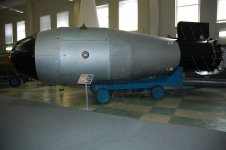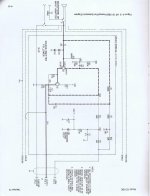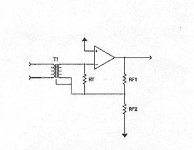john curl said:Thanks, JohnL, I would have presumed that is what I said to everyone.
I was thinking Wavebourn missunderstood you ... I'm not sure now.
john curl said:Now, please, we invented the transistor, and GE was one of the first converts! I am taking the circuit from the 1960 'GE Transistor Manual'. You may have learned from a different source, but we still beat you to the Moon! Keep that in mind, when you confront me!
Please don't 'quibble' (look it up), Wavebourn
I don't confront you, John! I confirm you painting the whole picture about that first transistor stages. 😉
1. One resistor in collector, one resistor from collector to base. Very beta-dependable stage, thermally unstable. Very non-linear.
2. One resistor in collector, voltage divider between collector-base-ground. More temperature and beta - stable, but the gain is beta-dependent. Low input resistance. Still bad linearity, but Ok for input stages, especially with low output resistance.
3. The same as 2, but with resistor in emitter. Even more stable. More predictable voltage gain, more linear, higher input resistance.
4. The same as 3, but emitter resistor is shunted by capacitor. Retains stability of 3, regains amplification of 2.
originally posted by John Curl
......but we still beat you to the Moon! Keep that in mind, when you confront me!
True, but the Soviets built the world's largest bomb -- the Tsar Bomba. Capable of 100 megatons yield, dialed back to 50 megatons for testing.
Attachments
john curl said:Now, please, we invented the transistor
Who invented the transistor?
http://www.electro.patent-invent.com/electricity/inventors/julius_lilienfeld.html
Julius Edgar Lilienfeld (1881-1963)
he invented a transistor and the electrolytic capacitor in the 1920s. When Brittain, Bardeen and Schockley tried to get a patent on their device, most of their claims were rejected due to the Lilienfeld patents.
US1745175 (describing a device similar to a MESFET)
US1900018 (A thin film MOSFET.)
US1877140 (A solid state device where the current flow is controlled by a pourous metal layer, a solid state version of the vacuum tube.)
US2013564 (The electrolytic capacitor)
Julius Edgar Lilienfeld (1881-1963)
he invented a transistor and the electrolytic capacitor in the 1920s. When Brittain, Bardeen and Schockley tried to get a patent on their device, most of their claims were rejected due to the Lilienfeld patents.
US1745175 (describing a device similar to a MESFET)
US1900018 (A thin film MOSFET.)
US1877140 (A solid state device where the current flow is controlled by a pourous metal layer, a solid state version of the vacuum tube.)
US2013564 (The electrolytic capacitor)
john curl said:160 vs 180? Were you not looking at 9 X 40 = 360? Your model deviates from a REAL test by 10%, that is normal, BUT from manual computation by 200%.
Perhaps we should not judge each other so quickly and easily.
Sorry John I corrected that, the stupid schematic program put a value (the same) as default on my picture. If the R's are equal it's gm*Rl/2 as the estimated gain or 20 per Volt of drop. So in your case about 9V or ~180.
scott wurcer said:
Sorry John I corrected that, the stupid schematic program put a value (the same) as default on my picture. If the R's are equal it's gm*Rl/2 as the estimated gain or 20 per Volt of drop. So in your case about 9V or ~180.
That stupid schematic program confused everyone. 😉
PH104 said:
True, but the Soviets built the world's largest bomb -- the Tsar Bomba. Capable of 100 megatons yield, dialed back to 50 megatons for testing.
It is sad, that a brilliant education schools produced those who wasted talents making weapons...
I did not work for military, despite our program was oriented on design of reliable equipment that can survive enormous conditions.
Trust me, several good friends and trusted bosses made H bombs to use on U-NO-WHO ! I just couldn't do it, I didn't have the 'heart' for it.
Thank you Dimitri. I was also told that A.G. Bell used ideas from an Italian guy from 20 years before to make the telephone. And Edison could not get patents in England on the lightbulb, because of Swan's earlier work. Each country likes to teach that its inventors virtually invented 'everything', and so it goes! 

You are right John,
His name is Antonio Santi Giuseppe Meucci
http://chem.ch.huji.ac.il/history/meucci.html
You see how it is important to be in the right place in the right time...
His name is Antonio Santi Giuseppe Meucci
http://chem.ch.huji.ac.il/history/meucci.html
You see how it is important to be in the right place in the right time...
dimitri said:You are right John,
His name is Antonio Santi Giuseppe Meucci
http://chem.ch.huji.ac.il/history/meucci.html
You see how it is important to be in the right place in the right time...
"In 1861, victim of dishonest speculators, he lost his house and all his money. From then on, he would always live in destitute conditions."
Darn those speculators! Even today they're still ruining peoples lives and the economy.
john curl said:Are you using a 2619 preamp on the 1" and 1/2" mikes, Demian?
Per your request here is the schematic for the HP 15119C preamp. Its actually very simple. Input impedance is 1GOhm in parallel with less than 2 pF. The FET is an SFE793 (whatever that is, HP used it in a few products).
I'll dig out the B&K 2619 and post similar if I can find it.
Attachments
1audio said:
Per your request here is the schematic for the HP 15119C preamp. Its actually very simple. Input impedance is 1GOhm in parallel with less than 2 pF. The FET is an SFE793 (whatever that is, HP used it in a few products).
I'll dig out the B&K 2619 and post similar if I can find it.
Wow, 200V on a capsule! 😱
There should be huge output.
I'll try my Chinese copy of M47 on higher voltage,
All of the measurement mikes run 200V, from the original WE 640AA through the current ones. The B&K's also use the same inch dimensions as the original WE.
If the mike wasn't designed for 200V you could have a catastrophic breakdown. The bias potential pulls the diaphragm in significantly.
The other interesting thing is to look at the physics of wavelengths vs. bandwidth on audio. A 1" diaphragm really starts becoming very directional at 12 KHz and almost useless at 18 KHz or so, in a pencil type housing. The larger housing used in recording mikes alter this but don't extend the response, more likely reduce it. However we all want that 100 KHz extension. There is something there, but I don't know what. . .
If the mike wasn't designed for 200V you could have a catastrophic breakdown. The bias potential pulls the diaphragm in significantly.
The other interesting thing is to look at the physics of wavelengths vs. bandwidth on audio. A 1" diaphragm really starts becoming very directional at 12 KHz and almost useless at 18 KHz or so, in a pencil type housing. The larger housing used in recording mikes alter this but don't extend the response, more likely reduce it. However we all want that 100 KHz extension. There is something there, but I don't know what. . .
I heard the difference on Earthworks' demo CD between 20 and 50 KHz mics. Don't know how it works.
A little mike theory might be useful. Most people don't realize that mikes are mechanically rolled off normally within the audio band, much like a moving magnet cartridge is electrically rolled off within the audio band. This is to flatten out the boost created by the microphones diameter. It dominates just about everything.
Julius Lilienfeld
True, but Bardeen and Brattain got a patent for their point contact transistor. Opposed to one of the FETs of Lilienfeld, which only shows a miniscule field effect (Crystal Fire, p.185), this transistor does really work.
see: inst.eecs.berkeley.edu/~ee40/su04/publications/2524035.pdf
also: http://www.pbs.org/transistor/background1/events/patbat.html
Cheers,
Edmond.
dimitri said:Julius Edgar Lilienfeld (1881-1963)
he invented a transistor and the electrolytic capacitor in the 1920s. When Brittain, Bardeen and Schockley tried to get a patent on their device, most of their claims were rejected due to the Lilienfeld patents.
US1745175 (describing a device similar to a MESFET)
US1900018 (A thin film MOSFET.)
US1877140 (A solid state device where the current flow is controlled by a pourous metal layer, a solid state version of the vacuum tube.)
US2013564 (The electrolytic capacitor)
True, but Bardeen and Brattain got a patent for their point contact transistor. Opposed to one of the FETs of Lilienfeld, which only shows a miniscule field effect (Crystal Fire, p.185), this transistor does really work.
see: inst.eecs.berkeley.edu/~ee40/su04/publications/2524035.pdf
also: http://www.pbs.org/transistor/background1/events/patbat.html
Cheers,
Edmond.
- Status
- Not open for further replies.
- Home
- Amplifiers
- Solid State
- John Curl's Blowtorch preamplifier


